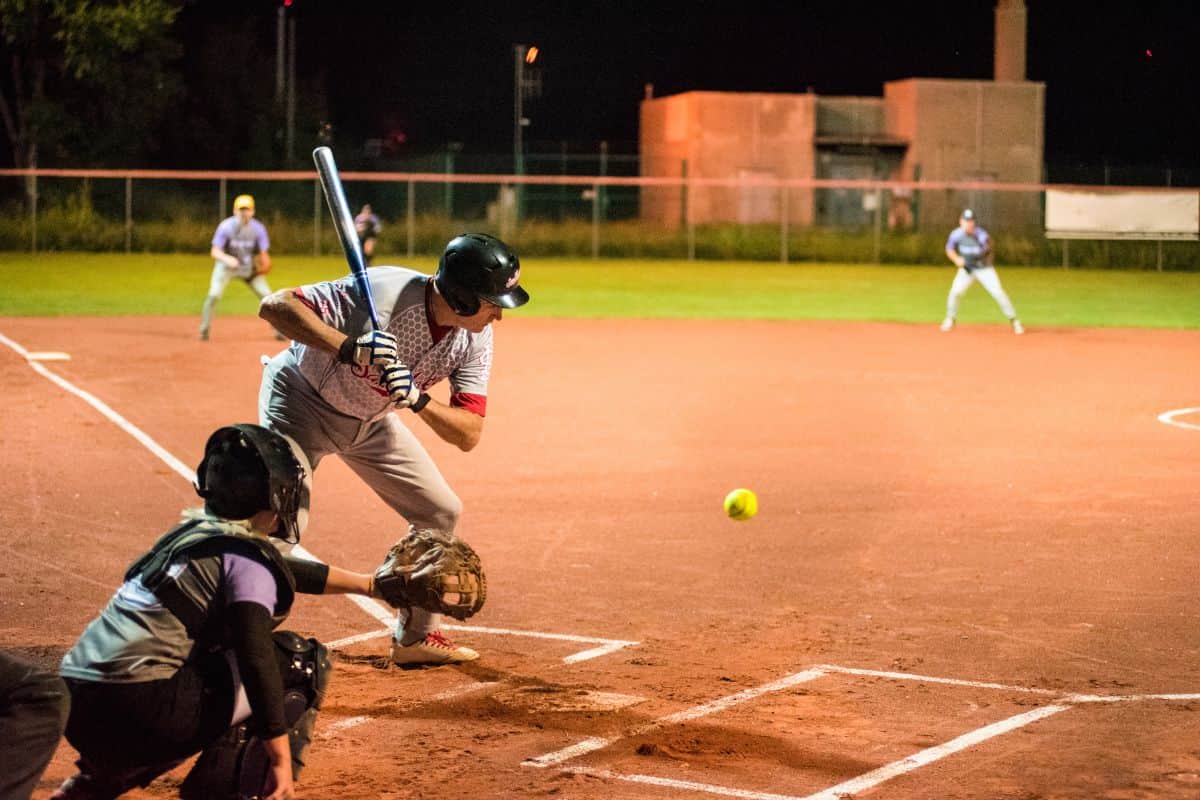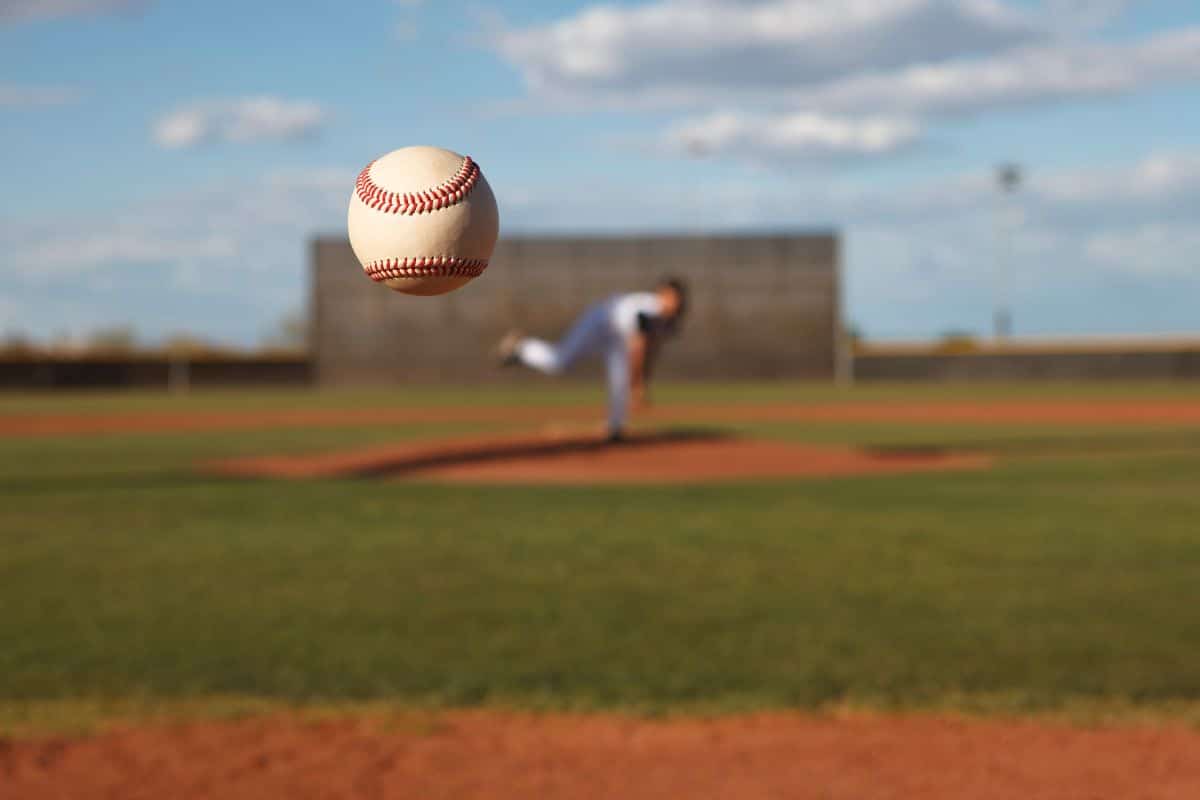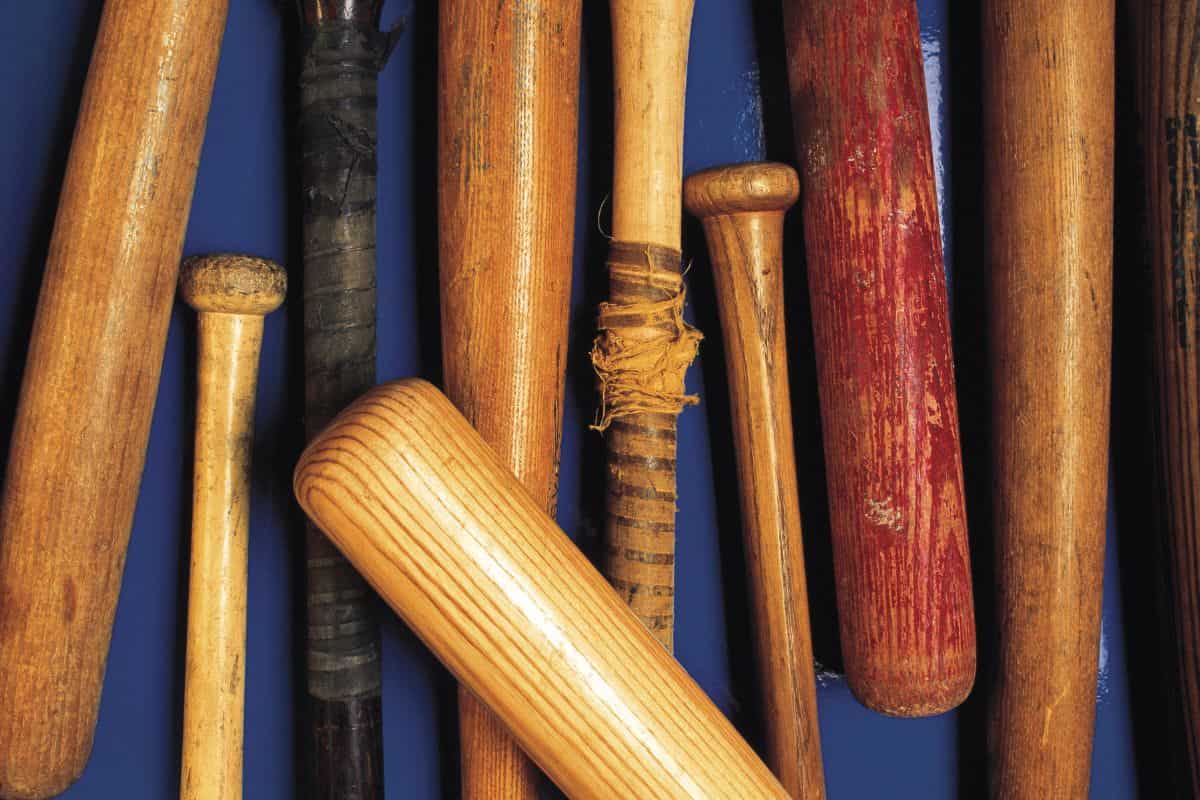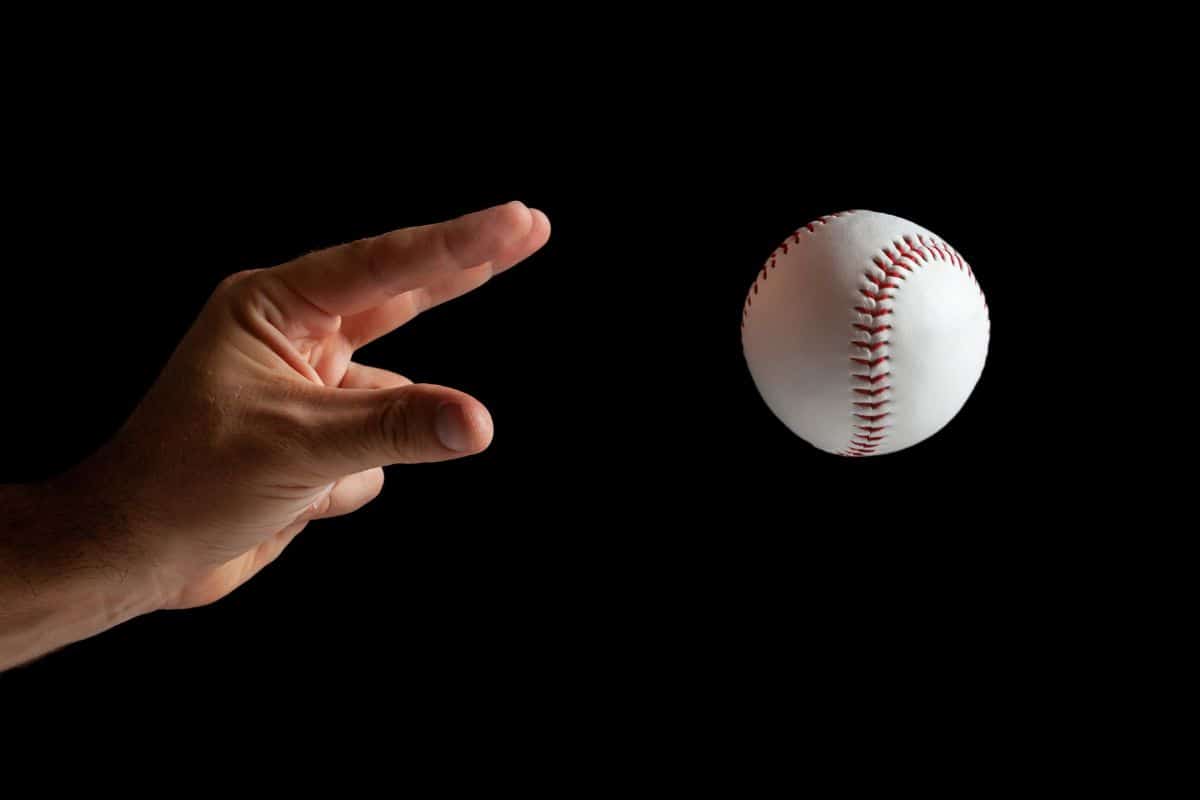If you’re a keen softball player, then you’ll always be on the lookout for ways to improve your game.
One of the best ways to get better at softball, at least if you’re looking at pitching, is to make sure that you can change up your style of pitching depending on the batter.
This rule of thumb works for softball just as it works for baseball, and is essential to success in either sport.
Why is this? Well, if you’ve got a hard hitter in front of you, it’s a good idea to throw them a soft pitch softball.
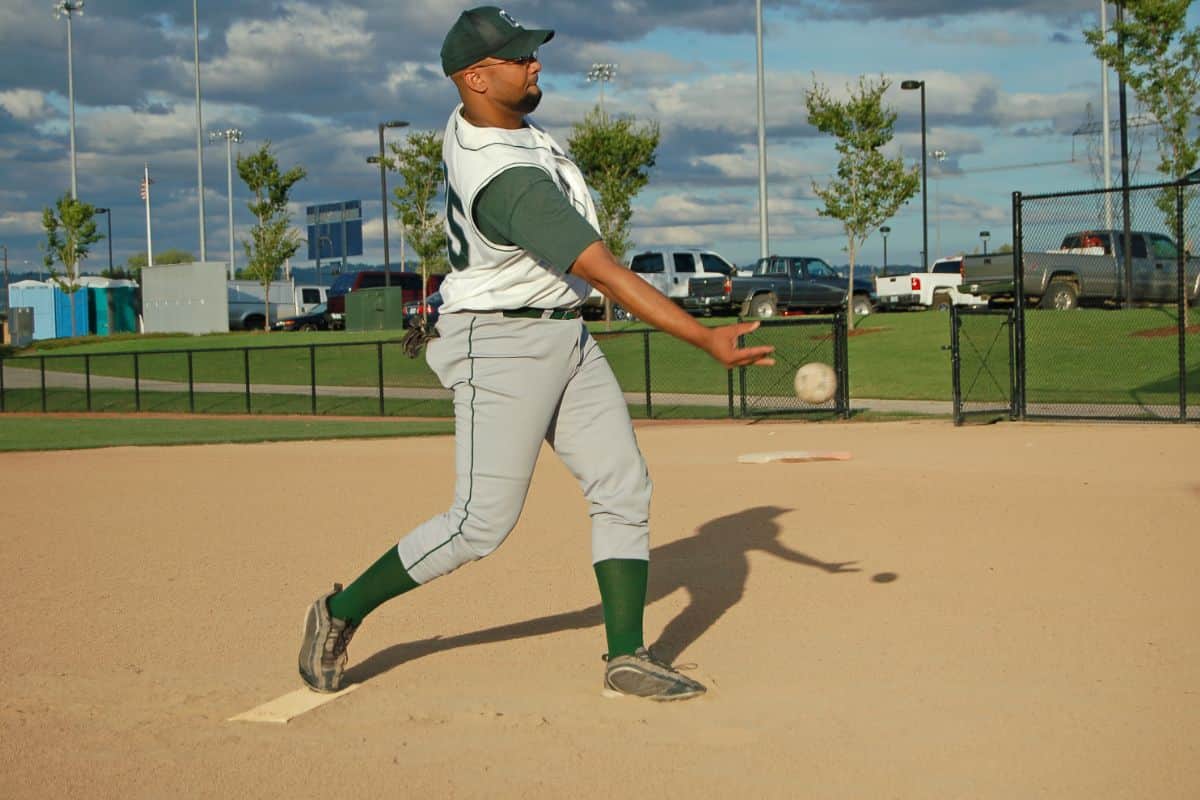
Typically, this will cause them to miss the ball, because they aren’t expecting the slower speed, along with its rotational axis and its rate of spin.
On the other hand, you’ll want to be able to use a fast pitch in other scenarios.
There is a lot of benefit to a slow pitch softball pitch, and it’s well worth putting the time in to master.
Few batters will expect you to have this under your sleeve, and it’s sure to catch plenty of them out.
With the right advice and the correct focus, you can master the slow pitch softball pitch. Well, we’ve got that advice for you!
In our helpful guide below, you’ll find a range of professional tips that will tell you exactly how you can master the slow pitch softball pitch.
Read on – and begin improving your game!
Different Varieties Of Slow Pitch Pitches
If you’re going to master slow pitch softball pitches, you’ll need to know the 5 different varieties of slow pitching styles that there are.
Knowing these, you’ll be able to practice each of them, and be able to pull out whichever specific one you need when the occasion arises.
These 5 varieties of slow pitching styles are:
- Screwball
- Curveball
- Slider
- Backspin
- Knuckleball
Let’s look at each of them in more detail.
Screwball Pitch
This is quite a rare type of throw, and it’s a good pair for the slider pitch style that we’re going to look at later.
However, unlike the slider, the axis of this style breaks to the side of the arm that you pitch with.
To do a screwball slow pitch, first swing your throwing arm slowly in a pendulum-like movement.
Continuing, move the arm down behind you, right up until it’s in line with the ground.
Move it forward, turning your palm to face downward as it reaches the highest point of the screen.
As you do this, reposition your weight onto the foot of the side of your pitching arm and step your other leg forwards.
Shift your body weight onto that foot now, releasing the ball.
As it releases, snap and roll your wrist away to the side of the hand you’re using (right goes right, left goes left).
The pitching arm should then follow through towards the ball’s target, before you take a few steps back and reposition your weight evenly again.
Thanks to the different axis, a batter will have to wait until about half the way (or a third) until they can understand where the ball is likely to go – meaning that it’s good for disrupting batters’ timing.
Curveball
This is the opposite version of the backspin style, which we’ll look at later.
With this, you throw the ball with a spinning motion that is going forward, though you should change your hand movements depending on the batter’s batting side.
If they’re right-handed, throw using a forehand motion, while if they’re left-handed use a backhand motion.
Slider
While the screwball style of pitch had its axis break to the side of your pitching arm, this is the opposite: a slider style pitch rotates towards the side of your gloved hand.
This turning of the axis helps to generate something called “Magnus effects”.
You must also make sure that the axis remains horizontal while the ball is flying, otherwise it will not break.
This is because the pressure on each side of the ball will be equal.
Otherwise, if you do it correctly, it’s a great style of pitch for giving sharp breaks.
Backspin
This style of slow pitch is probably the most popular, or at least one that you should prioritize mastering. Why?
Well, it has a high backspin rate, meaning that if the batter hits the ball with a down motion then it should deflect in a way that loses them the point.
On top of that, it has a surprising arching motion which makes it difficult for the batters to square on it. Of course, that’s only if you do it right.
With practice and practice, you’ll soon manage to make sure that the ball drops at a steep angle from the top of its arc.
Knuckleball
This style of slow pitch is going to take a lot of practice too, because it requires a lot of arm speed.
On top of that, you’ll need to make sure that the ball isn’t rotating much when you throw it, because the airflow and air pressure is very important here.
How so? Well, it all gets very scientific.
The airflow around the ball creates different levels of air pressure on each side of the ball, which will make the ball move a bit more once it’s in the air.
The combination of speed and air pressure turning the ball will all go to create a slow pitch style that’s quite effective, though admittedly a little unsurprising to most batters.
If you want to really catch them out, it’s worth trying one of the other styles.
How To Master Slow Pitch Softball Pitching? – 7 Professional Tips
There are always ways to improve when you’re practicing slow pitch softball pitching, and we’ve got 7 professional tips for you below.
Focusing on each of these should get you even closer to mastering your pitching.
Vary Your Slow Pitch Styles
One of the best ways to confuse the batters is to use a different style of slow pitch every time.
This way, they’ll never know what to expect, and will probably overcompensate or pull the wrong moves themselves.
This is why it’s essential that you have all the different types of slow pitches (which we just covered, and will cover in more detail later) up your sleeve.
Patience
Patience is key. If you hurry, it can make your playing unfocused and erratic.
Make sure to keep your body and mind calm, pitching each ball with the same attitude and drive, throwing it at the right speed.
It can be easy to lose patience when you’re on a losing streak.
If your pitches have been messing up or missing the target, it’s easy to become frustrated and lose focus of your subsequent throws.
Try not to let this happen. Bring the same equal mind to each and every throw, not letting the previous throws get to you.
Treat each pitch as if it is the first. Plus, when you’re not on the softball field, try to regularly think about your game.
Don’t treat the time you’re not playing as downtime, treat it as an opportunity to meditate and what you’ve been doing right – and what you’ve been doing wrong.
Plan new strategies ahead of your next game or practice.
Infielder
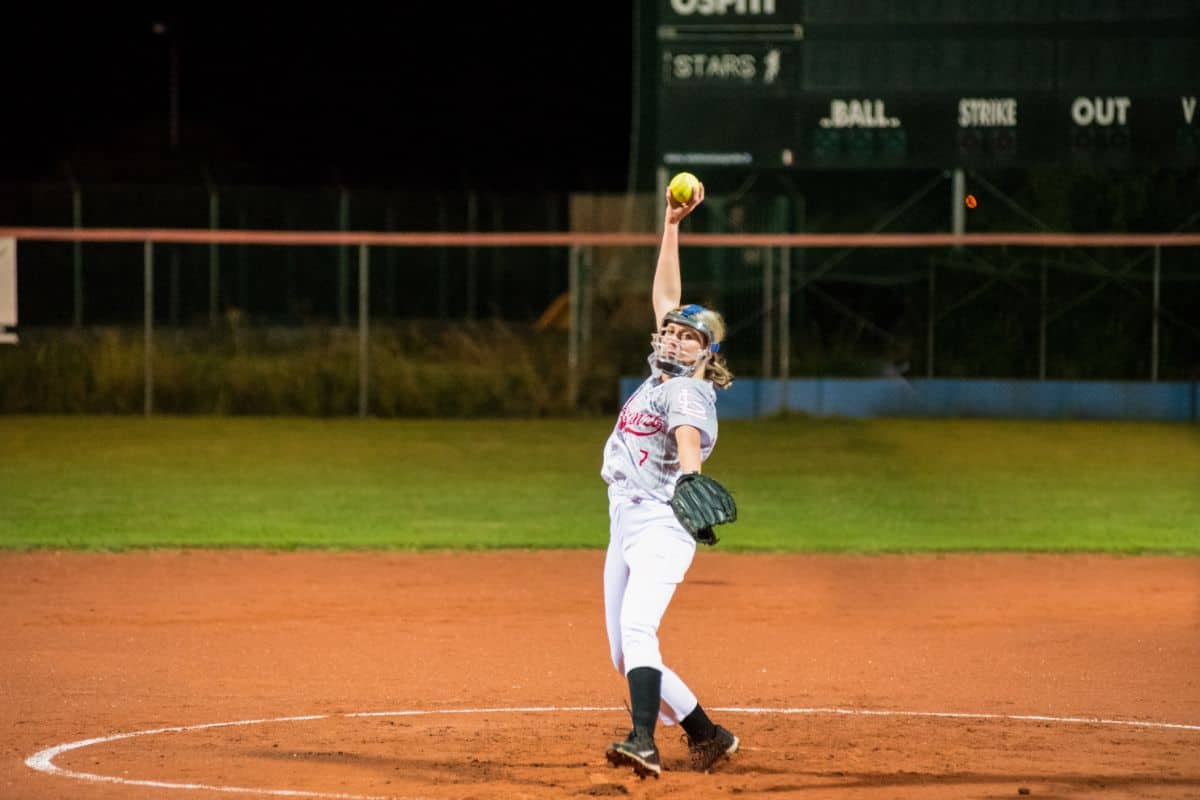
The moment you release the ball, move backwards about 6 steps.
This will close up the gap, readying yourself in case the batter tries to hit to the center.
Positioning is key to softball success, and you want to make sure that you’re always ready for whatever response there might be to your hit.
The job doesn’t end when you pitch the ball! You need to be ready for how they will hit it and where it might go.
Keep your eye on the ball as you move back into position, and watch it be thrown between the other fielders.
Practice Consistently
Practice is essential to success, but you need to practice regularly.
Have a set schedule and don’t miss it. If you practice only now and then, you won’t build on your skills as well.
This is because you’ll spend half your time and energy just getting back to the point where you were last time.
When you practice on a consistent basis, you will be able to build on your work, because you won’t be forgetting things in between periods of rehearsal.
Exercise Your Legs
You may think only your arms need exercise, since they pitch the ball, but it’s a whole body effort.
One of the most important areas of your body to focus on with exercise is your legs. Legs are essential to the game, for bending and striding forward.
They complement your pitching, so work on building them up. Plus, you’ll want to be agile.
Agility is key to a successful throw, because it’ll allow you to quickly move backwards into position and await the result of your pitch.
Build On What You Know
Once you know the basics, and the essential pitch styles, try and build on them.
You can make them your own by changing up parts of the styles when you practice.
Not all changes will work, but that’s why you try it all out beforehand, so that you can find the successful alterations and focus on making them better and better.
Additionally, learn new and niche techniques.
Look online for extra tips, buy books on softball, or ask coaches and professionals for their advice.
If you change up the well-known slow pitch styles enough, it will keep the batters constantly guessing.
When you use an established style of slow pitch, it’s going to be an effective throw, but some batters will know what to expect.
However, if you deliver a twist on a classic, the batter won’t know what to do – and they’ll likely mess up the shot.
Know Your Batter
Finally, know the batter in front of you. Look at how they’ve been playing so far and the types of shots that they’ve been using.
See where they succeed most, and change your game in order to undercut them.
On top of that, imagine how you might respond to the pitches. Knowing that, work to thwart it – and the batter.
3 Essential Factors To Understand For A Successful Slow Pitch Softball
There is plenty to learn about slow pitch softball pitching, as you have seen.
However, here are 3 essential factors that you must understand if you are to succeed.
The Strike Zone
If you want to master slow pitch softball pitching, you need to understand all about the Strike Zone.
This covers three different areas, all influenced by the height of the batter. The first is the “top zone”, which is below the batter’s chest.
Next comes the “middle zone”, which is the waist area of the batter.
Finally, you have the “bottom zone”, which is the area around the kneecaps.
Once you are aware of these areas on each of the batters that you face, you can play to them, aiming your slow pitch at each of them in different scenarios.
The Pitching Grip And Its Release
This is all about the different styles of pitches that we looked at earlier, and we are going to look at them in more detail soon.
Understanding and learning each of the different styles is essential to your success, so that you can vary up your pitches and pull specific styles out of the bag when you need them the most.
Each of the pitch styles vary in how you grip them and the way that you release the ball.
On top of that, each style varies in their accuracy, the velocity of the ball, and the duration of how long it’s going to be in the air.
The Arc Of The Ball
In the typical leagues, the arc of the ball is going to vary anywhere between 6 feet and 12 feet.
Knowing this, you can improve your pitches, and ensure that they’re performing properly.
Plus, if you want your pitch ball to strike the batter exactly where you want it to, then you’ll need to understand the science of arcs and how a ball will drop.
How To Pitch The Different Styles Of Slow Pitch Pitches?
Earlier, we looked at the key kinds of slow pitch pitch styles. They are:
- Screwball
- Curveball
- Slider
- Backspin
- Knuckleball
If you want to master them, then the methods are going to be different for each.
Thankfully, we’re going to explain how to do all of them now!
How To Slow Pitch A Screwball?
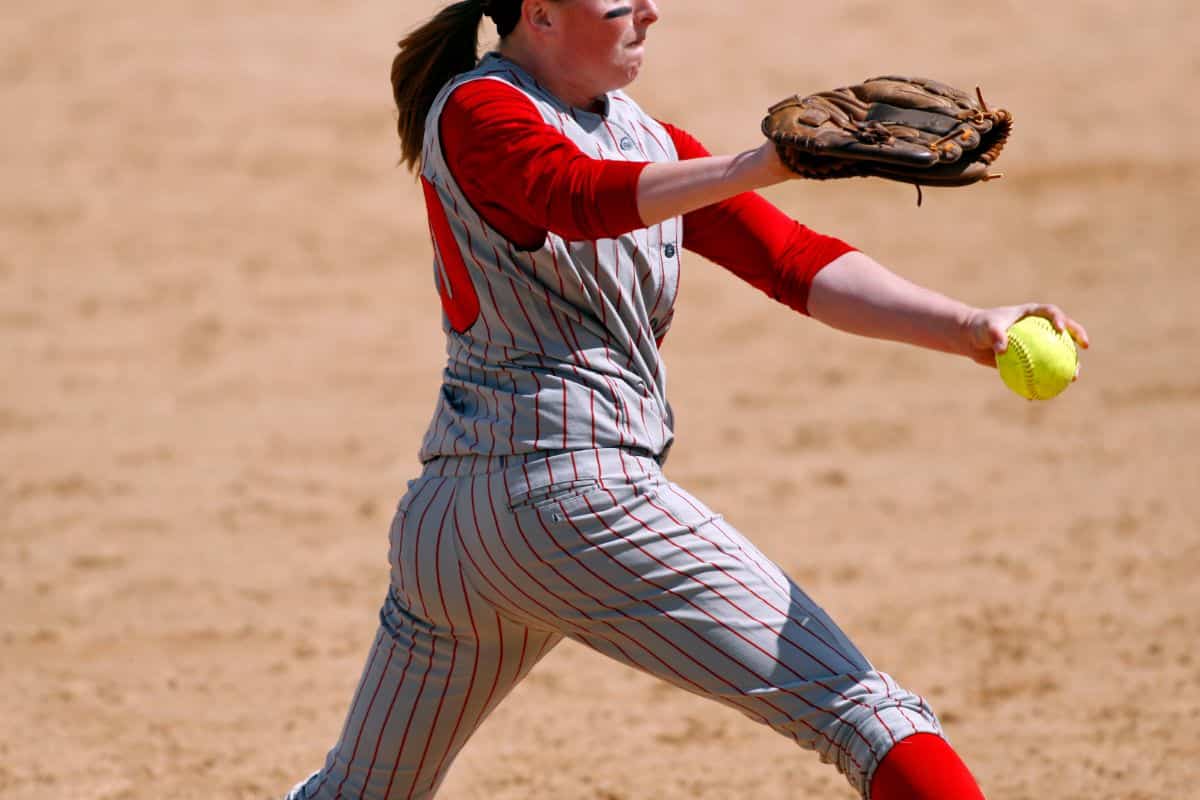
Step 1: Getting The Screwball Grip
To get the perfect grip for a screwball slow pitch, position your middle and index fingers across the ball as widely as possible.
The wider they are, the more spin you’ll get.
Finally, put your thumb on the backside of the ball, positioned between the seam and the vertical stripe.
Step 2: Releasing The Screwball
As we mentioned earlier, the screwball is like the slider, but you’re breaking towards the side of your pitching arm this time.
In order to effectively release it this way, you’re going to need to use your ring finger’s pressure on the ball as you let go.
Begin by moving your ball-holding hand back until it’s at shoulder height, then ensure the forearm is angled in line with first base and your wrist in line with third base.
When you move the hand forward to let go of the ball, try to do so at a 90 degree angle.
Additionally, turn the wrist towards the side of your pitching arm.
How To Slow Pitch A Curveball?
Step 1: Getting The Curveball Grip
For a curveball grip, put your second and third fingers on the two seams that you can see on the ball.
After that, rest the first and fourth fingers next to these, finally placing the thumb underneath.
You can also curl your index finger a bit, but don’t do this if you aren’t comfortable.
Step 2: Releasing The Curveball
The slow pitch curveball will go through your body, so it is essential that you are using your whole body properly when you throw it.
Remember, pitches aren’t just about your arms.
As a result, make sure that your legs are stable and your upper body is positioned correctly.
As you move forward to release the ball, make sure that you stride, with your front foot a little over.
This will create a sharp angle to direct the pitch.
Next, bend your elbow as the arms are coming down, because this will give your wrist the support it needs in the throw.
Additionally, always ensure the elbow is moving at a 90 degree angle, and keep the spin tight.
How To Slow Pitch A Slider?
Step 1: Getting The Slider Grip
The slider pitch will give you a sharp break and a high spin rate, making it an essential throw to master.
To get the proper grip for it, first employ a four-seam grip, which is where the middle and index fingers are placed perpendicular to the horseshoe-shape of the ball’s seams.
However, place your thumb a bit next to the seam instead this time.
Speaking of thumbs, a slider is thrown by pushing the ball out with exactly that – your thumb.
Make sure that you’re not using a wide finger position for the middle and index fingers, because it will worsen the rotation, reducing the break.
When the ball does spin, though, you’ll want it to rotate towards the side of you that has a glove.
Step 2: Releasing The Slider Ball
When releasing the softball, turn your wrist so that the palm of your hand is facing downward.
This is essential because it will help you get better wrist rotation, as well as better rotation in your elbow and shoulder.
As you go through the lion of your thigh, keep your hand straight, and keep it that way when you finally release the ball.
If you do this correctly, your hand should change from its original 90 degree angle into a new angle of 0 degrees.
With all these movements, you should pitch a slider that has an axis which turns a little towards the side of your glove as it is thrown, but switches to pressure on the pitching side as it’s flying through the air.
How To Slow Pitch A Backspin?
Step 1: Getting The Backspin Grip
To get the proper grip for a successful slow pitch backspin, put your thumb on the backside of the ball and your index and middle fingers in a wide grip on the front side.
Keep the index and middle fingers near to the rotation axis.
Always make sure that your hand is comfortable in these positions. If it isn’t, it will ruin your throw.
Step 2: Releasing The Backspin Ball
The key to releasing a slow pitch in the backspin style is getting a high spin rate, which should give you a steep drop at its end, allowing it to deflect at a desirable angle off the bat.
In order to get this high spin rate, you’ll want your thumb and fingers to make pressure on the ball, pinching it almost.
At the same time, you’ll want a rapid rotation of your wrist, flipping it from 90 degrees to 0 degrees quickly.
How To Slow Pitch A Knuckleball?
Step 1: Getting The Knuckleball Grip
In order to get the correct grip for throwing successful knuckleball slow pitch, you want to get a four-seam grip.
Position your four fingers on the seam of the softball, and your thumb placed on the seam’s end on the backside of the ball.
Additionally, try to leave a little gap between your palm and the ball’s surface.
It’s very important that you don’t create any wrist action with a knuckleball, although you do want all the fingers and the thumb to be touching the ball very firmly.
The reason you don’t want any wrist motion is because it will cause the ball to spin, which is not the point of a knuckleball pitch.
Step 2: Releasing The Knuckleball
With a successful slow pitch knuckleball, you’ll want the ball to have a flight height of between 12 feet and 13 feet.
This is absolutely crucial, because anything too high or too low can cause your pitch to lose, and the batter to succeed.
If you keep between the correct height range, the ball should drop into the hitting zone properly.
As you go to throw and bring your arm back, keep your wrist so that it is straight with your forearm.
Then, when the arm comes forward again, keep a straight pushing motion in that direction.
Just as you’re releasing, and the ball is leaving your hand, push it a bit with your fingers in order to give it a little extra oomph.
You don’t need to improve the ball’s rotation, simply push forward and keep anywhere between a half and a quarter turn during the ball’s flight.
Frequently Asked Questions
What Is The Most Difficult Softball Pitch?
In this article, we’ve looked at the five types of different slow pitch softball pitches that you can do.
As you read the instructions for each, some might have seemed more difficult to master than others.
Out of all of them, though, the most difficult softball pitch to pull off properly is the curveball.
This is because it’s got a fairly unique throwing method.
On top of that, you will need to achieve a high rate of spin with the ball, all the while holding the correct body position.
It’s a lot to keep in your mind, which makes it the hardest softball pitch to pull off properly.
How Important Is A Good Glove To Your Pitch?
You might think so much about your softball uniform, but a good glove is actually essential to a successful throw.
Without a good glove, you’re not going to be operating at your best.
What Is The Quickest Softball Pitch Ever?
According to Guinness World Records, the quickest softball pitch ever was 123.9 km/h. Monica Abbott achieved this back in 2012.
Don’t worry, you don’t have to aim for this every time you pitch!
Final Thoughts
If you follow our tips carefully, you will ll be able to master slow pitch softball pitching and all its different styles.
- Fenway Park Seating Chart: Best Seats To See the Red Sox - July 17, 2023
- What is RBI in Baseball: A Simple Explanation of The “Ribby” - July 3, 2023
- What is DFA in Baseball? A Term No Player Wants to Hear - July 3, 2023

